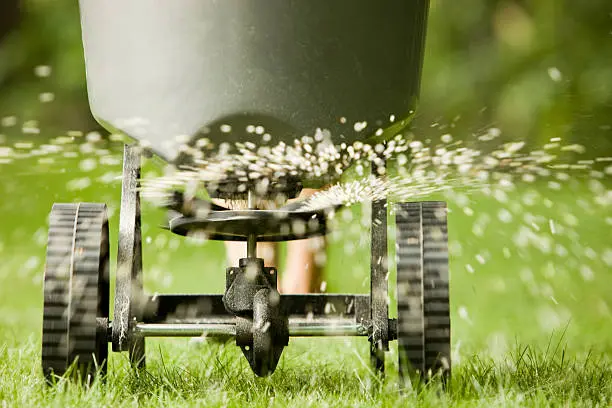How often should you fertilize your lawn
Optimizing Lawn Health Through Proper Fertilization
How often should you fertilize your lawn? It’s a question that homeowners often ponder as they strive to maintain a vibrant and healthy lawn. Giving your lawn fertilizer is crucial to giving it the nutrition it needs to grow and prosper. Finding the ideal fertilization frequency, though, can occasionally be difficult. This tutorial will examine the variables that affect how frequently you should fertilize your lawn and offer professional advice for the best outcomes.

Understanding Your Lawn’s Needs
The frequency of lawn fertilization depends on several factors, including the type of grass, soil conditions, climate, and time of year. Warm-season grasses, such as Bermuda and Zoysia, typically require more frequent fertilization during their active growing seasons in spring and summer. Conversely, cool-season grasses like Kentucky Bluegrass and Fescue may require less frequent fertilization and benefit most from applications in the fall.
Seasonal Fertilization Schedule
A common recommendation for most lawns is to fertilize them three to four times per year: in early spring, late spring, late summer, and fall. This schedule provides a balanced approach to lawn nutrition, supplying essential nutrients at key times throughout the growing season. However, it’s essential to adjust your fertilization schedule based on your lawn’s specific needs and conditions.
Spring Fertilization
In early spring, as grass begins to emerge from dormancy, a light application of fertilizer can jumpstart growth and green-up your lawn. Consider using a slow-release fertilizer with a balanced nutrient ratio to provide sustained feeding over several weeks. Late spring fertilization can help maintain healthy growth and address any nutrient deficiencies that may arise.
Summer Fertilization
While fertilizing in the summer can be beneficial, it’s essential to proceed with caution, especially in regions with hot, dry weather. Avoid applying fertilizer during periods of drought or extreme heat, as it can stress the grass and increase the risk of burn. If you choose to fertilize in the summer, opt for a slow-release formula and water deeply after application to prevent damage.
Fall Fertilization
Fall is arguably the most critical time to fertilize your lawn, as it prepares grass for the winter months ahead and promotes strong root growth. A fall application of fertilizer helps replenish nutrients lost during the summer and provides essential energy reserves for winter survival. Choose a fertilizer with higher potassium content to enhance cold tolerance and disease resistance.
Monitoring Your Lawn
Regular monitoring of your lawn’s health is crucial for determining the effectiveness of your fertilization schedule. Watch for symptoms of low nutrient levels, including yellowing or sluggish growth, and modify your fertilization schedule as necessary. Making educated judgments regarding fertilizer can also be aided by doing a soil test, which can offer insightful information about the pH balance and nutrient levels in your lawn.

Understanding How Often Should You Fertilize Your Lawn
In conclusion, ow often should you fertilize your lawn depends on a variety of factors, including grass type, climate, and time of year. To guarantee that your lawn gets the nutrients it needs to flourish all year round, you can adhere to a seasonal fertilization program and modify it as needed. Regular monitoring and proper care are essential for maintaining a lush, green lawn that enhances your outdoor space for years to come. Get in touch with Evergreen Scapes Landscaping for expert lawn fertilization services in South Bend, IN. Call us (574) 240-7113 today!